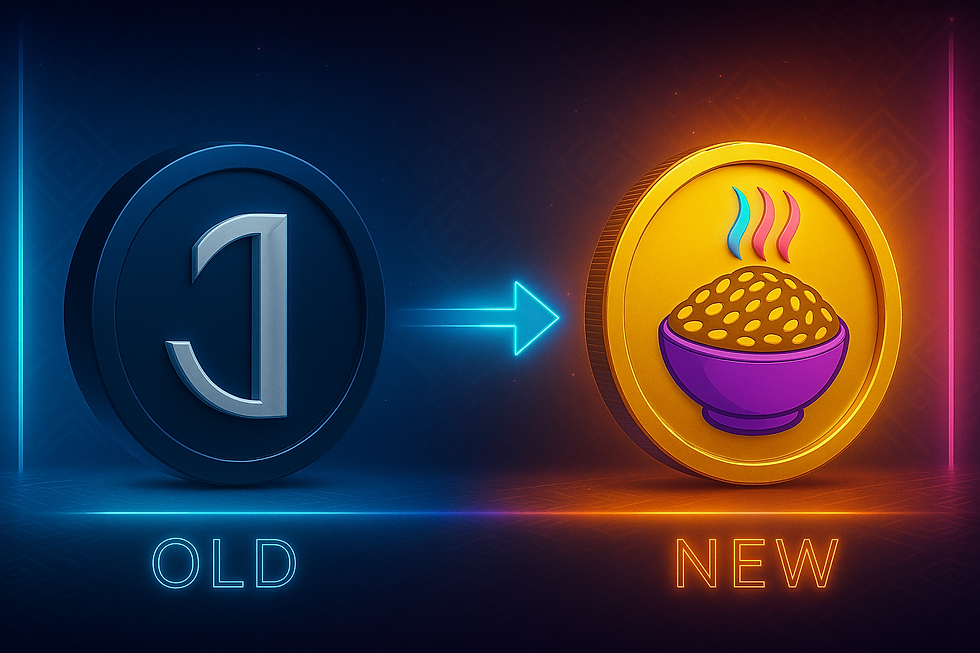Jollof Rice: Culture, Competition, and the Future with Jolofcoin 2.0
- Admin
- Sep 1
- 3 min read

Few dishes in the world carry as much cultural weight and spark as much debate as Jollof rice. Across West Africa, Jollof is more than food—it’s identity, pride, and tradition served on a plate. From wedding feasts in Dakar to street parties in Lagos and Accra, the rich, red, smoky rice is always at the center of the table. And now, with the rise of Jolofcoin 2.0, this beloved dish finds a new stage—not just in kitchens and festivals, but on the blockchain.
The Origins of Jollof Rice

The roots of Jollof rice trace back to the Senegambian region, specifically the Wolof (or Jolof) Empire of the 14th–16th centuries. The dish known as thieboudienne in Senegal—rice cooked in tomato sauce with fish, vegetables, and spices—is widely believed to be Jollof’s ancestor. Over time, as trade and migration spread across West Africa, so too did this culinary tradition. Each country adapted it to their own tastes and ingredients, but the spirit remained the same: a communal dish that brings people together.
Ghana vs. Nigeria: The Eternal Rivalry
Today, the loudest voices in the Jollof conversation are undeniably Ghana and Nigeria.
Nigeria’s Jollof is bold and fiery, with a rich tomato base, heavy seasoning, and often cooked with smoky “party rice” flair.
Ghana’s Jollof is slightly sweeter, with a deeper tomato flavor and fragrant spices that give it a unique edge.
This rivalry has gone beyond kitchens—it has inspired music, memes, comedy skits, and international headlines. Jollof wars are fought on Twitter, in YouTube cook-offs, and even in the diaspora, where West Africans proudly defend their country’s recipe at every gathering.
Senegal’s Place in the Story
But while Ghana and Nigeria dominate the headlines, Senegal holds the historical claim. The birthplace of Jollof rice, Senegal reminds the world that without thieboudienne, there would be no Ghanaian or Nigerian Jollof. This fact fuels friendly banter, with Senegalese people often stepping in to remind others: “We started it all.”
In truth, each country has made Jollof its own, and that’s part of the beauty. Whether you prefer the smoky depth of Nigerian Jollof, the balanced richness of Ghanaian Jollof, or the original Senegalese thieb, one thing is undeniable: Jollof is a unifier, even in its competition.
From the Pot to the Blockchain: Jolofcoin 2.0

This cultural energy is exactly what Jolofcoin 2.0 represents. Just like Jollof rice itself, Jolofcoin is rooted in African tradition but designed to cross borders, create debates, and bring people together. It’s not just a meme coin—it’s a cultural symbol on the blockchain.
Ghana, Nigeria, and Senegal all have a stake. Jolofcoin represents the shared heritage of West Africa, transforming a cultural rivalry into a digital movement.
It’s about fun and community. Just as Jollof sparks laughter and arguments at every party, Jolofcoin 2.0 creates a community where identity, culture, and innovation meet.
The future is global. Jollof has already reached every continent through the diaspora; Jolofcoin is the next step, carrying that cultural pride into the digital economy.
Conclusion

The story of Jollof rice is one of origin, rivalry, and unity—the same themes that fuel Jolofcoin 2.0. Whether you’re Team Ghana, Team Nigeria, or proudly Senegalese, Jolofcoin invites you to take your seat at the table. The pot is cooking, the aroma is spreading, and this time, the feast is digital.
Jolofcoin 2.0 isn’t just a coin. It’s history on the blockchain—seasoned, spicy, and ready to serve the world.



Comments